New Earthquake Shakes Ecuador's Coast
It came days after a larger quake struck the same area and killed hundreds.

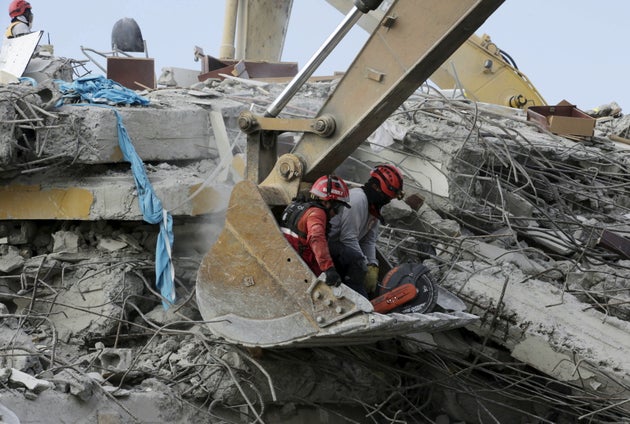
PEDERNALES, Ecuador (Reuters) - A magnitude 6.2 earthquake shook Ecuador's coast early on Wednesday, terrifying locals and impeding rescuers after a bigger weekend quake battered the same area and killed nearly 500 people.
The latest earthquake hit 25 km (15 miles) off Muisne on the northwest Pacific coast at a depth of 15 km, the U.S. Geological Survey (USGS) said.
That was near the epicenter of Saturday's 7.8 quake, which devastated a long swath of the coast and dealt a major blow to the oil-producing nation's already fragile economy.
Witnesses said two strong tremors of about 30 seconds each woke people up and sent them running into the street.
No tsunami warning was issued, and there were no immediate reports of major damage.
Ecuador's Geophysical Institute said there were in fact two quakes of magnitude 6.2, followed by 17 aftershocks. The USGS, however, mentioned one quake of 6.1 size.
Local media reported that rescue operations were temporarily suspended because of the new earthquake, amid dwindling hopes of finding more survivors from Saturday's quake.
That earthquake killed 480 people, left another 107 missing, and injured more than 4,600. It also destroyed about 1,500 buildings, triggered mudslides and tore up roads.
Some 20,500 people were left sleeping in shelters.
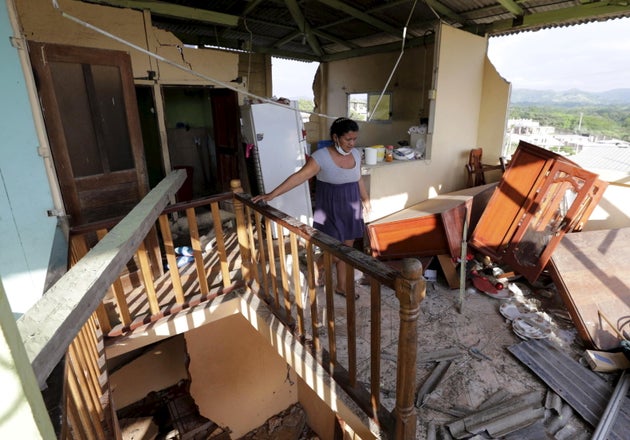
"PLEASE, GIVE US THE CORPSES"
Supervising work in the disaster zone, President Rafael Correa said the weekend quake had inflicted $2 billion to $3 billion of damage to the economy and could knock 2 to 3 percentage points off growth.
Lower crude revenue had already left the poor Andean nation of 16 million people facing near-zero growth, cutting investment and forcing it to seek financing.
In isolated villages and towns, survivors struggled without water, power or transport, although aid was trickling in.
Along Ecuador's Pacific coast, sports stadiums served as both morgues and aid-distribution centers.
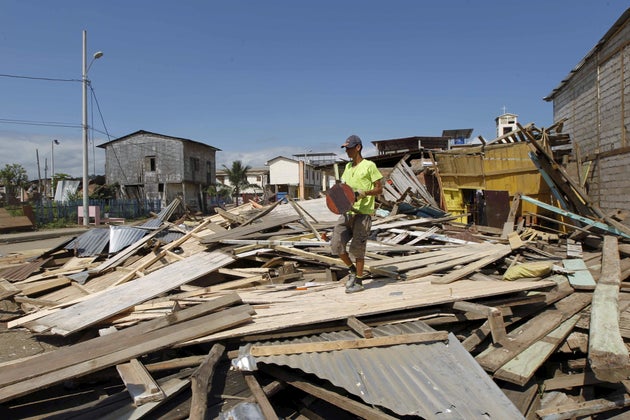
Scores of foreign aid workers and experts have come to help. About 14,000 security force members are keeping order, but sporadic looting has been reported.
Rescuers were losing hope of finding more people alive, although relatives of the missing begged them to keep looking.
"There is still a small margin of time to find survivors," Correa said. "But I don't want to give excessive hope."
One woman arrived from the highland capital Quito in search of her daughter and niece, who had been on a beach trip, and urged police to take care with excavators as they searched a destroyed hotel in Pedernales.
"Please," she said, "at least give us the corpses intact."
(Additional reporting by Alexandra Valencia and Diego Ore in Quito; Writing by Andrew Cawthorne; Editing by Larry King and Lisa Von Ahn)
http://www.huffingtonpost.com/entry/earthquake-hits-ecuador-again_us_57177e6be4b06f35cb713866
----------------------------------------------------------------------------------
April 20, 2016
Aftershocks plague Japan, toll from massive quakes climbs
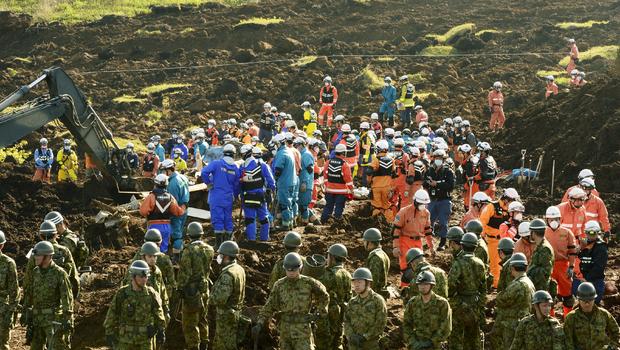
Rescue workers and Japan Ground Self-Defense Force soldiers conduct search and rescue operations at site where collapsed houses by a landslide caused by an earthquake in Minamiaso town, Kumamoto prefecture, Japan, in this photo taken by Kyodo, April 20, 2016.
TOKYO -- Searchers found a man's body Wednesday in a landslide-hit area in southern Japan, bringing the death toll to 48 from two powerful earthquakes last week as aftershocks continued rattling the country.
The U.S. Geological Survey reported a 5.8 magnitude earthquake Wednesday about 60 miles off the coast of Honshu prefecture, which was one of the hardest hit regions in the devastating March 2011 quake and tsunami. There were no reports of damage and no tsunami warnings issued after the large aftershock on Wednesday.
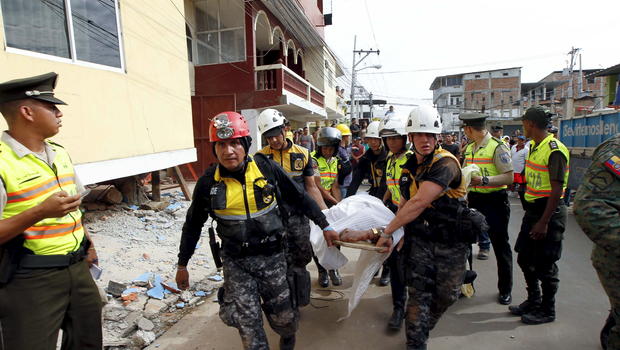
Police carry a body after an earthquake struck off Ecuador's Pacific coast, at Tarqui neighborhood in Manta April 17, 2016.
Three people remain missing after the pair of powerful quakes that struck Thursday and Saturday. Kumamoto prefecture said another 11 people had died from illnesses believed to be related to the physical stress of evacuation.
More than 100,000 people are homeless or have fled their homes in the south as aftershocks continue to shake the area. Many are living in cramped conditions in shelters or even their cars, with limited food and water.
A magnitude-6.5 earthquake on Thursday night followed by a 7.3 quake early Saturday morning caused widespread damage in parts of Kumamoto city and surrounding communities on Kyushu, the southernmost of Japan's four main islands.
The body was found in the mountain village of Minamiaso, where the second quake triggered landslides that slammed into buildings and across roads. Soldiers and other rescue workers used backhoes and shovels to search through dirt and debris for the missing.
Rain is forecast for Thursday, raising fears of more landslides.
In all, 14 victims have been found in Minamiaso. The hardest-hit town appears to be Mashiko, where 20 people died. Kumamoto prefecture has tallied 1,454 homes destroyed so far, of which 1,026 are in Mashiko.
Toyota Motor Corp. said Wednesday it would restart most assembly lines next week after they were halted because of earthquake-related parts shortages.
--
__._,_.___

No comments:
Post a Comment